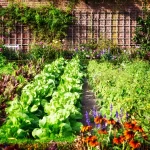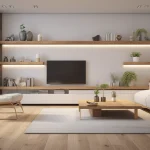
For a productive vegetable garden, choose a site near a water source, such as a rain barrel or a garden hose. The soil should be moist, well-drained, and warm to grow healthy vegetables. It’s also important to keep weeds at bay. The best vegetable garden layouts include trellises or other supports for vines.
A good vegetable garden soil is deep, well-drained, and has adequate levels of major nutrients, such as phosphorus, potassium, calcium, sulfur, and magnesium. In addition, it should have a pH of 6.0 to 6.8, and have a minimum organic matter content of five percent. If your soil does not meet these requirements, you may need to add a soil amendment.
MU Extension publications are an excellent source of information about vegetable gardening. These publications also discuss common pest and disease problems. These publications also cover how to prevent and control these pests and diseases. You can also refer to seed packets and plant tags for specific advice on how to grow different kinds of vegetables. Regardless of which method you choose, the most important thing is to make sure you have plenty of space to grow your favorite veggies.
The first major decision you’ll need to make is the location of your vegetable garden. The majority of vegetables thrive in full sunlight and need at least 6 hours of direct sunlight per day. However, herbs and greens do well in partial shade. Aside from this, you’ll also need to choose a location with plenty of water. Fortunately, there are several ways you can get the right amount of water to your plants without spending a fortune.
Planting your own vegetable garden can be both enjoyable and rewarding. However, it takes careful planning and preparation to ensure the most successful results. Make sure the soil is moist but not too wet. When the soil is moist enough, it should crumble and not stay in a molded ball. When planting, rake the soil after tilling it. A vegetable garden is a great way to promote a healthy diet and save money on food expenses. Plus, homegrown produce will be fresher and tastier than store-bought fruits and vegetables.
For smaller areas, container gardens are a great option. You don’t need raised beds to grow a container garden. A five-gallon bucket will work great. Make sure it has 10 to 15 holes in the bottom and add some planting soil and seeds. Plant one large plant per bucket and smaller plants in the rest. Once the plants are growing, fertilize them according to the directions on the package.
You can start a vegetable garden from seeds or transplants. Start your seeds six to eight weeks ahead of time before the last expected frost in your area. Once they are ready to transplant, move them to their new location. Follow the directions on the seed packet for spacing and placement. Alternatively, you can start planting your tomatoes, beans, lettuce, and radishes directly in the ground.









